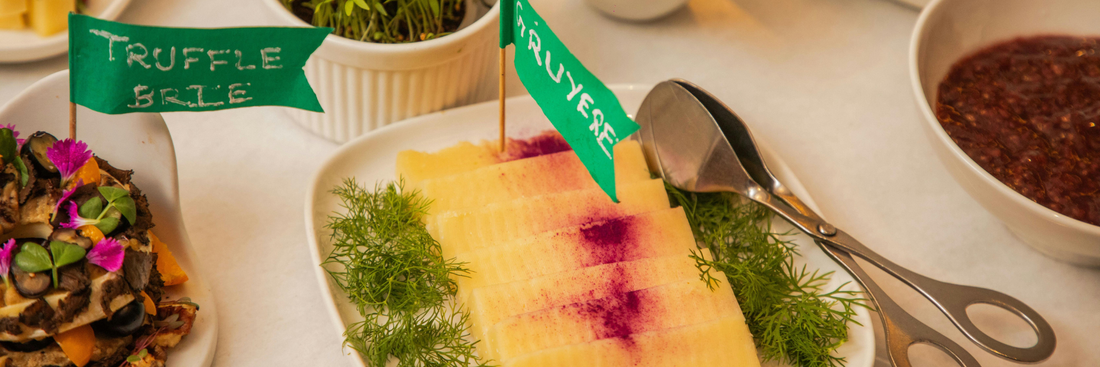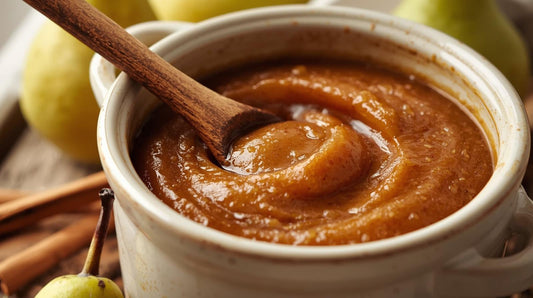Few foods capture the essence of indulgence like truffle cheese. A marriage of creamy, savory cheese and the luxurious aroma of truffle, this gourmet creation delivers a depth of flavor that feels both rustic and refined. Whether melted over risotto, sliced on a cheese board, or shaved onto pasta, truffle cheese transforms ordinary dishes into extraordinary moments.
- Cheese and Chocolate: Perfect Pairings & Seasonal Ideas
- Cheese Facts – Fun, Historical, and Scientific Insights
- Holiday Cheese Recipes – Festive Ideas for Thanksgiving & Christmas
What Is Truffle Cheese?

Truffle cheese is cheese infused with truffle the prized subterranean fungus known for its earthy, musky aroma and complex flavor. Cheesemakers use shaved truffles, dried flakes, or truffle oil to blend their fragrance into a variety of cheeses ranging from soft Brie to hard Gouda.
The result? A buttery, umami-rich bite where the fat of the cheese enhances the truffle’s aromatic oils, creating a flavor both earthy and elegant.
Why Truffle Elevates Cheese Flavor
Truffles release volatile compounds that interact perfectly with cheese’s natural fats, intensifying aroma and richness. That’s why a small amount of truffle transforms the entire wheel. The flavor is layered nutty, mushroom-like, garlicky, and faintly sweet all carried by a creamy base.
Cheese with Truffle vs. Truffle Oil Cheese
- Cheese with real truffle: Uses genuine truffle shavings. It offers a subtle, authentic aroma that evolves with age.
- Truffle oil cheese: Infused with natural or synthetic truffle oil to replicate the aroma. It’s more accessible but sometimes more intense.
Both have a place on the table the first for purists, the second for creative cooks and cafés seeking consistency.
A Symbol of Gourmet Luxury
Because truffles are seasonal and rare, truffle cheese is synonymous with culinary luxury. It appears in fine-dining menus, boutique cheese counters, and gourmet gift hampers. Even a thin slice on warm bread can turn a simple snack into something memorable.
The Origins of Truffle Cheese
European Roots: Italy and France
Truffle cheese traces its roots to northern Italy and southern France, regions blessed with fertile soil and truffle-bearing trees. In Piedmont and Umbria, Italian cheesemakers began blending black truffles into soft cow’s-milk and sheep’s-milk cheeses centuries ago. French artisans followed, enriching Brie and Camembert with black truffle layers for winter feasts.
Where Season Meets Craft
Truffle season runs from late autumn to early spring the same period cheesemakers traditionally produce and age winter wheels. The natural timing inspired local producers to infuse freshly unearthed truffles into cheeses still warm from curdling vats, capturing their fleeting fragrance in fat.
A Global Gourmet Trend
In the last two decades, truffle cheese has spread far beyond Europe. North American creameries craft truffle cheddars and Goudas; Japanese dairies produce truffle burrata and truffle cream cheese; Australian artisans mix black truffles from Western Australia into aged cheddar. What was once a rare indulgence is now a global gourmet staple.
Styles of Truffle Cheese (Types & Textures)

Soft and Creamy Truffle Cheeses
Soft truffle cheeses offer the most decadent mouthfeel and strongest aroma.
- Truffle Brie: A triple-cream Brie layered with truffle paste; luscious, buttery, and fragrant.
- Truffle Camembert: Slightly firmer, with a mushroom-forward profile and earthy depth.
- Truffle Goat Cheese: Tangy, bright, and floral; ideal for spreading on crackers or warm toast.
Their rich fats amplify truffle aroma, making them perfect for appetizers or cheese boards.
Semi-Soft and Hard Truffle Cheeses
Harder varieties provide balance, less overwhelming aroma, longer shelf life.
- Truffle Gouda: Creamy Dutch cheese aged 4–6 months with black truffle specks; nutty and sweet.
- Truffle Cheddar: Aged cheddar blended with truffle flakes; sharp, savory, and deeply satisfying.
- Sottocenere al Tartufo: Italian semi-soft cheese aged in ash with paper-thin truffle slices; sophisticated and aromatic.
By Truffle Type: Black vs. White Truffle Cheese
- Black truffle cheese: Robust, garlicky, and musky perfect for hearty dishes like risotto or mashed potatoes.
- White truffle cheese (using Tuber magnatum Pico): Lighter, floral, and slightly sweet; shines in fine dining and delicate recipes.
Truffle Oil Cheese Varieties
When fresh truffles are out of season, truffle oil adds aroma and accessibility.
Natural truffle oil derives from real truffle essence, while synthetic versions replicate its scent chemically. Natural oils create a gentler, more authentic balance.
How Truffle Cheese Is Made
Infusion Methods
- Mixing truffle into curds: Fresh truffle is minced and folded into the curds before pressing.
- Layering truffle paste: Soft cheeses like Brie are split horizontally and filled with truffle paste.
- Oil brushing or injection: Hard cheeses may be infused post-aging with truffle oil to renew fragrance.
Each technique influences how evenly flavor develops and how long the aroma lingers.
Key Ingredients
- Fresh or preserved truffles
- High-fat milk (cow, goat, or sheep)
- Sea salt and natural rennet
- Optional truffle oil or paste for finishing
Aging and Flavor Development
Aging changes both texture and intensity.
- Young cheeses (2–4 weeks) are soft, creamy, and aromatic.
- Mature cheeses (3–12 months) develop deeper nuttiness and subtler truffle undertones.
Artisan vs. Commercial Production
Artisan cheesemakers craft small batches with local milk and real truffles, resulting in seasonal variety and terroir-driven taste.
Commercial producers use truffle oil for consistency and affordability, ideal for restaurants or retail.
Both satisfy different audiences one celebrates craftsmanship, the other accessibility.
Artisan Cheese vs Industrial Cheese: What Food Businesses Should Know
Popular Gourmet Truffle Cheeses Around the World
Italian Classics
- Sottocenere al Tartufo: Pale cow’s-milk cheese aged in ash, marbled with truffle. Elegant, silky, and mildly spicy.
- Crutin: From Piedmont; semi-aged, buttery, and filled with black truffle flakes. Pairs beautifully with Nebbiolo wine.
Dutch Creations
- Truffle Gouda: Creamy and mellow; black truffle specks create a beautiful marbling. Great for melting.
- Aged Truffle Wheels: Harder versions aged 12 months for slicing or grating over pasta.
French Favorites
- Truffle Brie: Triple-cream Brie layered with truffle paste and mascarpone. The height of indulgence.
- Tomme aux Truffes: Semi-hard Alpine cheese speckled with black truffle shavings.
Modern Innovations
- Truffle Burrata: Mozzarella shell filled with truffle cream luxurious and trendy.
- Vegan Truffle Cheese: Cashew-based blends with coconut oil and real truffle essence.
- American Truffle Cheddar: Bold, rich, and perfect for truffle mac and cheese.
Flavor Profile and Texture Explained
Truffle cheese offers a multi-layered sensory experience:
- Creaminess from the fat content of the cheese.
- Umami depth from the truffle compounds.
- Nutty or buttery base that rounds out the palate.
Black vs. White Truffle Influence
Black truffles produce deeper, more savory flavors, ideal for winter dishes.
White truffles are delicate and perfumed, better for fresh applications.
How to Taste Truffle Cheese Properly
- Serve at room temperature (remove from fridge 30 minutes before serving).
- Smell before tasting to appreciate the truffle bouquet.
- Cleanse your palate with sparkling water between bites.
- Use neutral sides: plain bread, apples, or unsalted nuts to let the cheese shine.
How to Use Truffle Cheese in Cooking (Truffle Recipes)

Simple Everyday Uses
Truffle cheese adds a gourmet touch to even the simplest dishes:
- Melt over pasta, risotto, or baked potatoes.
- Add to grilled cheese sandwiches or toasties.
- Shave onto scrambled eggs or roasted vegetables.
- Stir into creamy soups for an earthy finish.
Use small amounts its flavor is powerful.
Gourmet Dishes for Food Lovers
- Truffle Mac and Cheese: Combine aged cheddar and truffle Gouda for the ultimate comfort meal.
- Truffle Cheese Fondue: Melt truffle Brie or Fontina with white wine for a luxurious dip.
- Raclette with Truffle Cheese: Perfect for winter gatherings—serve with potatoes and pickles.
- Truffle Gnocchi or Steak Sauce: Blend grated truffle cheese into cream for an elegant restaurant-style sauce.
(Serve in eco-friendly paper bowls for stylish, waste-free dining.)
Cheese Boards & Entertaining
A truffle cheese board can be the centerpiece of any event:
- Pair with fig jam, truffle honey, and nuts.
- Add prosciutto, salami, or smoked duck for contrast.
- Use compostable serving trays or kraft food boxes for catering or take-home sets.
- Label each cheese and provide small bamboo knives for easy tasting.
To preserve aroma, slice just before serving and avoid covering with plastic wrap.
Perfect Pairings with Truffle Cheese
Wine Pairings
- Red wines: Pinot Noir, Chianti, Barolo, Nebbiolo earthy wines that mirror truffle’s depth.
- White wines: Chardonnay, Champagne, Sauvignon Blanc, or Chablis for freshness and acidity.
Beer and Spirits Pairings
- Beer: Belgian Trappist ales, dark lagers, or dry cider.
- Spirits: Aged whiskey, cognac, or dry vermouth; their woody notes complement truffle intensity.
Food Pairings
- Prosciutto or Parma ham
- Figs, pears, and apples
- Roasted mushrooms or asparagus
- Drizzles of truffle honey or balsamic glaze
(Use eco-friendly cheese boxes and snack cups for charcuterie-to-go or event setups.)
Common Mistakes When Using Truffle Cheese
Even gourmet ingredients need care. Avoid these pitfalls:
- Overheating: High heat destroys truffle aroma. Melt slowly over low heat.
- Overpowering flavors: Don’t combine with strong spices or garlic let the truffle lead.
- Too much truffle oil: A few drops go a long way; overuse creates an artificial taste.
- Poor storage: Wrap in parchment, then place in an airtight box. Avoid cling film, it traps moisture.
- Using dull knives: Clean cuts preserve the cheese texture and truffle visibility.
Proper handling ensures every bite maintains its aroma and luxury.
Storage, Serving & Sustainability
Truffle cheese, like all premium dairy products, is sensitive to air and temperature.
- Storage: Keep between 4–7 °C in the fridge, wrapped in breathable paper.
- Shelf life: Soft cheeses last up to 10 days; hard varieties up to 3 weeks.
- Transport: If gifting or catering, pack slices in biodegradable cheese containers or paper boxes to prevent condensation.
- Waste reduction: Encourage guests to take leftovers home in compostable packaging luxury and sustainability can coexist.
FAQs About Truffle Cheese
What makes truffle cheese so expensive?
Truffles are rare fungi found only in certain soils and seasons, harvested by trained dogs. Their scarcity and manual harvesting make them highly valuable.
What’s the difference between black and white truffle cheese?
Black truffle cheese is bold and earthy; white truffle cheese is lighter, floral, and aromatic.
What is truffle Gouda?
A Dutch semi-soft cheese infused with black truffle flakes. Creamy, nutty, and ideal for melting.
How is truffle oil cheese different from real truffle cheese?
Truffle oil cheese is flavored post-production; real truffle cheese includes actual truffle pieces mixed into the curds.
Can you melt truffle cheese for fondue or pasta?
Yes, but keep the temperature low to protect the truffle’s aroma.
What wines pair best with truffle cheese?
Pinot Noir, Chardonnay, Champagne, or Barolo.
What does truffle cheese taste like?
Rich, buttery, nutty, with deep umami and a distinct forest-earth aroma.
Is there vegan truffle cheese?
Yes, cashew-based or coconut-oil cheeses flavored with natural truffle essence offer a plant-based alternative.
Conclusion – A Taste of Luxury in Every Bite
Truffle cheese is where artisan tradition meets culinary opulence. From Italy’s ash-aged Sottocenere al Tartufo to creamy French Brie with white truffle, each variety tells a story of patience, craft, and nature’s rarest treasure.
It’s more than food, it’s an experience: the first whiff of earthy aroma, the silky melt on your tongue, the lingering umami finish that defines luxury dining. Whether served on a baguette, melted into risotto, or plated on a sustainable cheese board, truffle cheese turns every meal into a celebration.
If you’re a restaurateur, caterer, or cheese enthusiast, make the experience sustainable too. Choose eco-friendly cheese trays, bamboo cutlery, and compostable packaging because true indulgence includes caring for the planet that gives us its finest flavors.
In every slice of truffle cheese, you taste the soil, the forest, the craft, and the care.
Savor it slowly and let the aroma speak for itself.







